 W
WThe Bomb Alarm System was a US and UK network of optical bhangmeter sensors intended to confirm the detonation of an enemy nuclear weapon near cities or military installations within the US or at US operated early warning radar sites in the UK or Greenland.
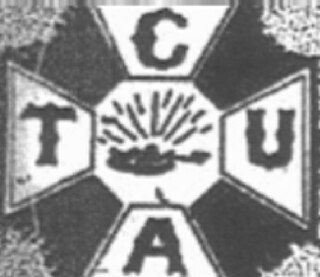 W
WThe Commercial Telegraphers Union of America (CTUA) was a United States labor union formed to promote the interests of commercial telegraph operators.
 W
WCustom House is a Canadian foreign exchange and money transfers company based in Victoria, British Columbia. It was acquired by Western Union in 2009 and now forms part of that company's "Western Union Business Solutions" division.
 W
WThe first transcontinental telegraph was a line that connected the existing telegraph network in the eastern United States to a small network in California, by means of a link between Omaha, Nebraska and Carson City, Nevada, via Salt Lake City. It was a milestone in electrical engineering and in the formation of the United States of America. It served as the only method of near-instantaneous communication between the east and west coasts during the 1860s. For comparison, in 1841, it had taken 110 days for the news of the death of President William Henry Harrison to reach Los Angeles.
 W
WNew Valley LLC is an American investment company owned by Vector Group.
 W
WThe Overland Telegraph Company was one of the organizations responsible for constructing the telegraph line which resulted in the first transcontinental telegraph network in the United States. The company built the section of line between Fort Churchill, Nevada Territory and Salt Lake City, Utah Territory.
 W
WThe Pacific Telegraph Act of 1860 called for the facilitation of communication between the east and west coasts of the United States of America. Hiram Sibley of the Western Union Telegraph Company won the contract. In 1861, Benjamin Franklin Ficklin joined Hiram Sibley in helping to form the Pacific Telegraph Company of Nebraska. At the same time, Jeptha Wade was asked by Hiram Sibley to consolidate smaller telegraph companies in California. While the Pacific Telegraph Company built west from Omaha, Nebraska, the Overland Telegraph Company of California was thus formed and built east from Carson City, Nevada. With their connection in Salt Lake City, Utah on October 24, 1861, the final link between the east and west coasts of the United States of America was made by telegraph. The First Transcontinental Telegraph lead to the immediate demise of the Pony Express. The Pacific Telegraph Company and the Overland Telegraph Company of California were eventually absorbed into the Western Union Telegraph Company.
 W
WThe Pacific Telegraph Company was one of the organizations responsible for constructing the telegraph line which resulted in the first transcontinental telegraph network in the United States. The company built the section of line between Julesburg, Colorado Territory and Salt Lake City, Utah Territory.
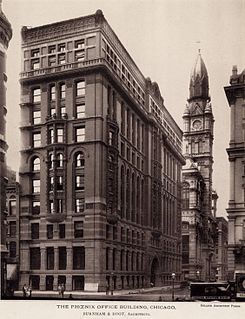 W
WThe Phenix Building was an office building in Chicago designed by the noted Chicago architectural firm of Burnham and Root. It was built by the Phenix Mutual Fire Insurance Company of Brooklyn, New York and occupied the block fronting Jackson Boulevard between Pacific Avenue and Clark Street. When completed in 1887, the building was seen as "the latest addition to Chicago's magnificent architectural structures". It was later owned by the Western Union Telegraph Company, who sold the building to the manufacturer and philanthropist Frederick C. Austin (1853-1931) in 1922. Austin donated it to Northwestern University in 1929 with the understanding that the income derived from it would "provide scholarships for the training of business executives". The building was demolished in 1957 and replaced by what today is known as the TransUnion Building, a twenty-four story office building designed by A. Epstein and Sons.
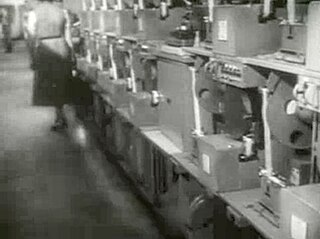 W
WPlan 55-A was one in a series of store and forward message switching systems developed by Western Union and used from 1948 to 1976 for processing telegrams. It is an automated successor to Plan 51, which commenced service in 1951 in a nationwide network of the U.S. Air Force, but required semi-automatic operation.
 W
WPostal Telegraph Company was a major operator of telegraph networks in the United States prior to its consolidation with Western Union in 1943. Postal partnered with Commercial Cable Company for overseas cable messaging.
 W
WThe Russian–American Telegraph, also known as the Western Union Telegraph Expedition and the Collins Overland Telegraph, was an attempt by the Western Union Telegraph Company in 1865–1867 to lay a telegraph line from San Francisco, California to Moscow, Russia.
 W
WThe Self Winding Clock Company (SWCC) was a major manufacturer of electromechanical clocks from 1886 until about 1970. Based in New York City, the company was one of the first to power its clocks with an electric motor instead of winding by hand.
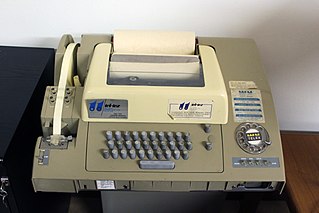 W
WThe telex network is a customer-to-customer switched network of teleprinters similar to a telephone network, using telegraph-grade connecting circuits for two-way text-based messages. Telex was a major method of sending written messages electronically between businesses in the post-World War II period. Its usage went into decline as the fax machine grew in popularity in the 1980s.
 W
WTrinity Court Building is the name of several structures that have occupied the address 70, 74, and 76 Trinity Place, between Rector and Albany Streets, in the Financial District of Lower Manhattan in New York City.
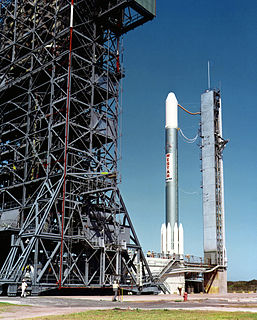 W
WWestar 1 was America's first domestic and commercially launched geostationary communications satellite, launched by Western Union (WU) and NASA on April 13, 1974. It was built by Hughes for Western Union, using the HS-333 platform of spin-stabilized satellites. Westar 1 was the first of five Westar satellites launched by Western Union from 1974 to 1982. Westars 1, 2, and 3 were 12-transponder satellites while Westar 4 and Westar 5 were launched with 24 transponders. Western Union built a teleport in Cedar Hill, Texas, to uplink content to the Westar satellites, and another teleport that, in addition to uplink services, would become the main TT&C center for the satellite, in Glenwood, New Jersey. A sixth satellite, Westar 6, was launched in 1984 but failed to reach orbit and was retrieved by the STS-51-A Space Shuttle mission later that year. It was later refurbished and relaunched in orbit of Asia as AsiaSat 1 in 1990.
 W
WWestern Union is a 1941 American Western film directed by Fritz Lang and starring Robert Young, Randolph Scott, and Dean Jagger. Filmed in Technicolor on location in Arizona and Utah, in Western Union Scott plays a reformed outlaw who tries to make good by joining the team wiring the Great Plains for telegraph service in 1861. Conflicts arise between the man and his former gang, as well as between the team stringing the wires and the Native Americans through whose land the new lines must run. In this regard, the film is not historically accurate; Edward Creighton was known for his honest and humane treatment of the tribes along the right of way and this was rewarded on the part of the Indians by their trust and cooperation with Creighton and his workers. The installation of telegraph wires was met with protest from no one.
 W
WWestern Union is a historic schooner located in Key West, Florida, United States. She is berthed at the Key West Bight at 202 William Street. Western Union is the last surviving authentic working tall ship built in Florida. On May 16, 1984, Western Union was added to the US National Register of Historic Places. She is also the official flagship of the State of Florida and the flagship of the city of Key West.
 W
WThe Western Union splice or Lineman splice is a method of joining electrical cable, developed in the nineteenth century during the introduction of the telegraph and named for the Western Union telegraph company. This method can be used where the cable may be subject to loading stress. The wrapping pattern design causes the join to tighten as the conductors pull against each other. This type of splice is more suited to solid, rather than stranded conductors.